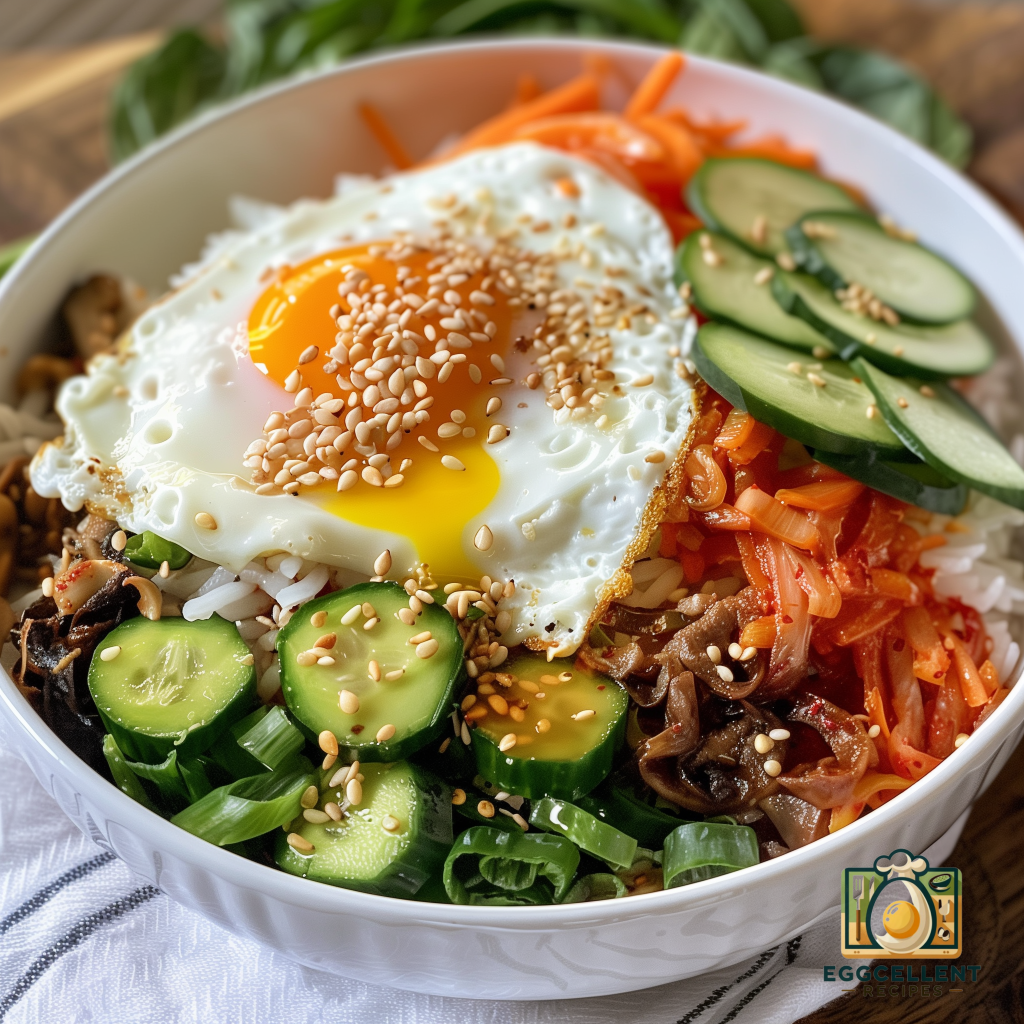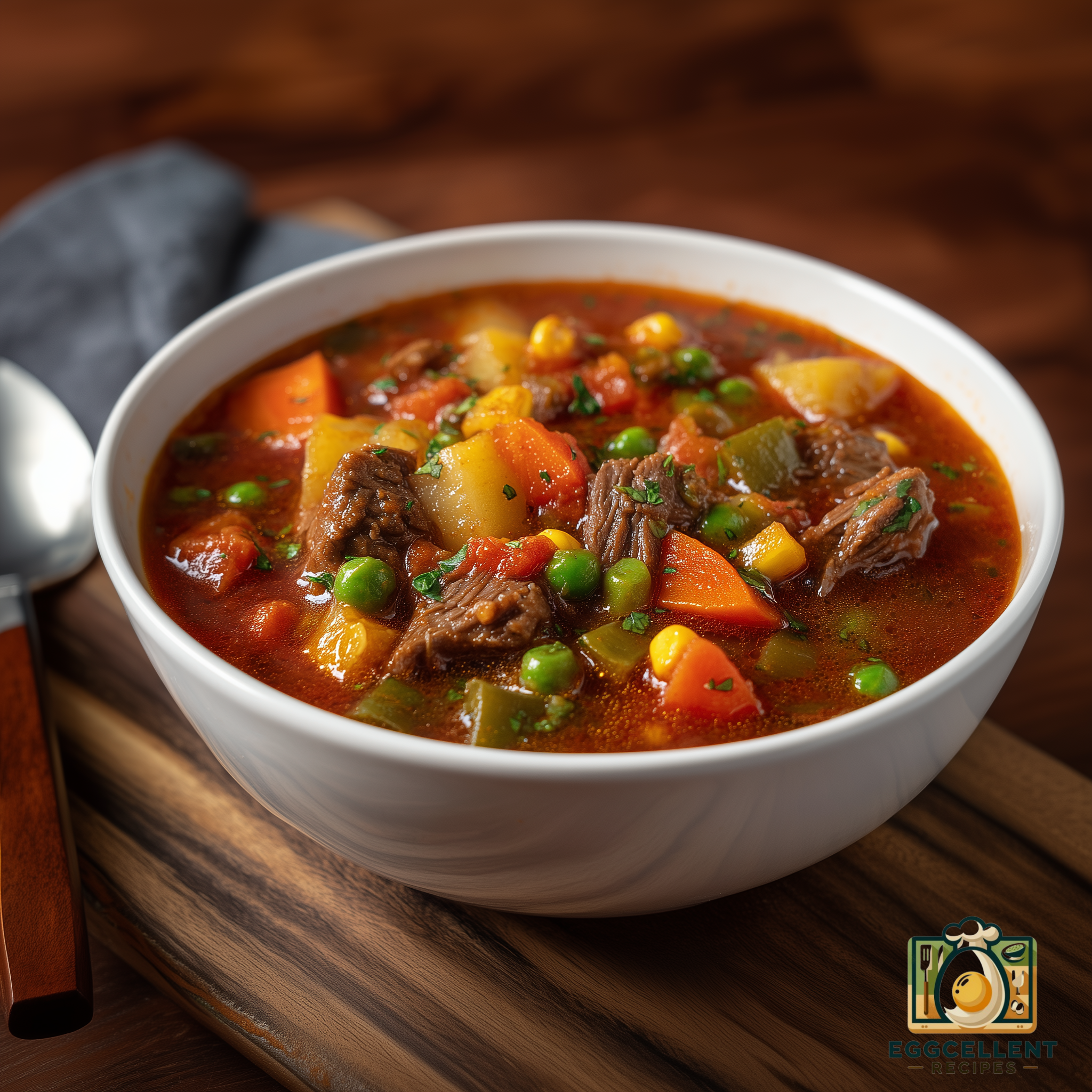
Craving a culinary trip to Korea from the comfort of your kitchen? Dive into the world of Korean cuisine with this simple yet delicious Korean Bibimbap with a Fried Egg recipe. Bibimbap, which translates to “mixed rice,” is a versatile dish consisting of a bed of rice, topped with an assortment of vegetables, a protein, and crowned with a perfectly fried egg. The mix of textures and flavors, especially with the runny yolk, makes for a delightful and wholesome meal that’s both colorful and nutritious. It’s an excellent choice for any meal of the day, giving you a burst of energy with its rich ingredients.
Tips to make the Korean Bibimbap with a Fried Egg recipe:
1. Use Day-Old Rice: For best results, use rice that has been cooked and chilled overnight. Day-old rice holds its shape better and won’t become mushy when mixed with the other ingredients.
2. Prep Your Veggies in Advance: Bibimbap is all about the variety of vegetables. Slice and dice your favorites such as carrots, spinach, mushrooms, and zucchini ahead of time. Blanch or sauté them before placing them on the rice to save time during meal preparation.
3. Customize Your Protein: While beef is a common choice, feel free to substitute it with chicken, tofu, or keep it simple with just the fried egg. Whichever protein you choose, make sure it’s seasoned well and cooked thoroughly.
4. The Perfect Fried Egg: For that iconic runny yolk, heat a non-stick skillet on medium heat, add a bit of oil, crack the egg into the pan, and cook until the whites are set but the yolk is still runny. A sprinkle of salt and pepper on the egg can add a punch of flavor.
5. Gochujang is a Must: Don’t skimp on the gochujang (Korean chili paste). It adds a unique depth of flavor and a touch of heat that ties all the bibimbap components together beautifully. Start with a small amount and adjust according to your heat preference.
How to Make Korean Bibimbap with a Fried Egg Recipe?

Korean Bibimbap with a Fried Egg Recipe
Equipment
- 1 Non-stick skillet For frying the egg and sautéing vegetables
- 1 Rice cooker or pot For cooking rice
Ingredients
- 2 cups Cooked rice Preferably short-grain rice
- 2 Eggs For frying
- 1 cup Spinach Blanched
- 1 cup Carrot Julienne-cut
- 1 cup Cucumber Thinly sliced
- 1 cup Bean sprouts Blanched
- 1/2 cup Shiitake mushrooms Sautéed
- 1/2 cup Kimchi Optional
- to taste Sesame oil
- to taste Sesame seeds
- to taste Salt
- 2 tbsp Gochujang Korean chili paste
- 1 tbsp Soy sauce
- 1 tbsp Sesame oil
- 1 tbsp Sugar Can adjust to taste
- 1 tbsp Water To dilute if necessary
Instructions
- Cook rice according to package instructions.
- Sauté spinach, carrots, and mushrooms in separate pans with a bit of sesame oil until tender. Season with salt.
- Blanch bean sprouts, and prepare cucumber and kimchi.
- In a large bowl, place a serving of rice. Arrange vegetables and kimchi (if using) neatly on top.
- Fry eggs to your liking and place one on top of each bowl.
- Drizzle sesame oil and sprinkle sesame seeds over the bowl.
- Serve with gochujang sauce on the side or mixed in.
Notes
Nutrition
I love this recipe, making Korean Bibimbap with a fried egg is not only simple but also offers a delectable journey into Korean cuisine. This dish is versatile, allowing you to mix and match ingredients according to what you have available or your personal preferences, making it perfect for any meal of the day. The combination of warm rice, vibrant vegetables, spicy gochujang sauce, and the creamy yolk of the fried egg creates a harmony of flavors that’s both comforting and thrilling to the palate.
Lastly, Bibimbap stands out as an excellent introduction to cooking with Korean flavors, offering a customizable and forgiving template for beginners and seasoned cooks alike. It’s more than just a meal; it’s a delightful experience that brings together nutrition, taste, and the joy of cooking in one bowl. So, whether you’re looking to explore Korean cuisine or simply searching for a hearty, satisfying dish, Bibimbap with a fried egg is sure to impress.






